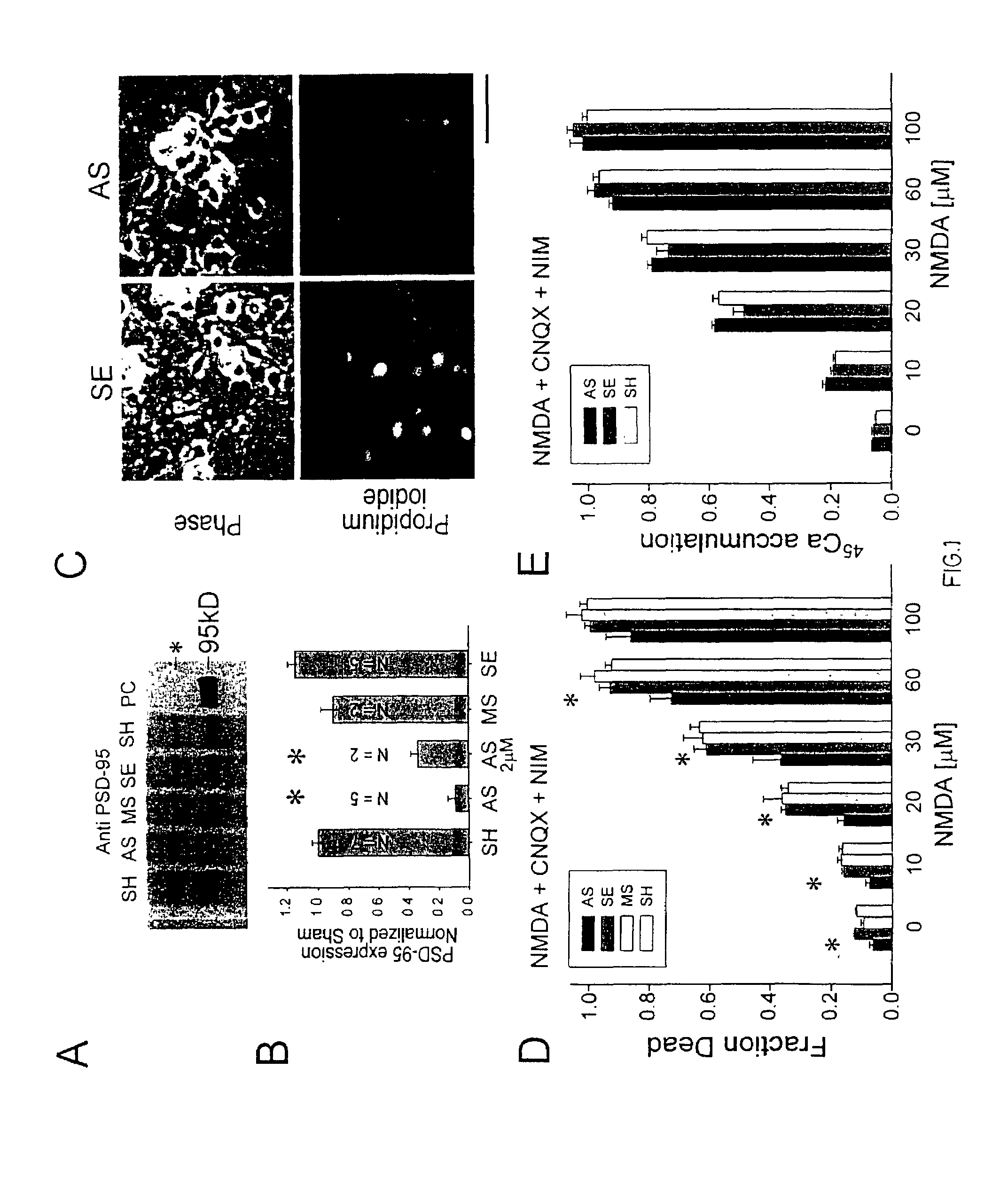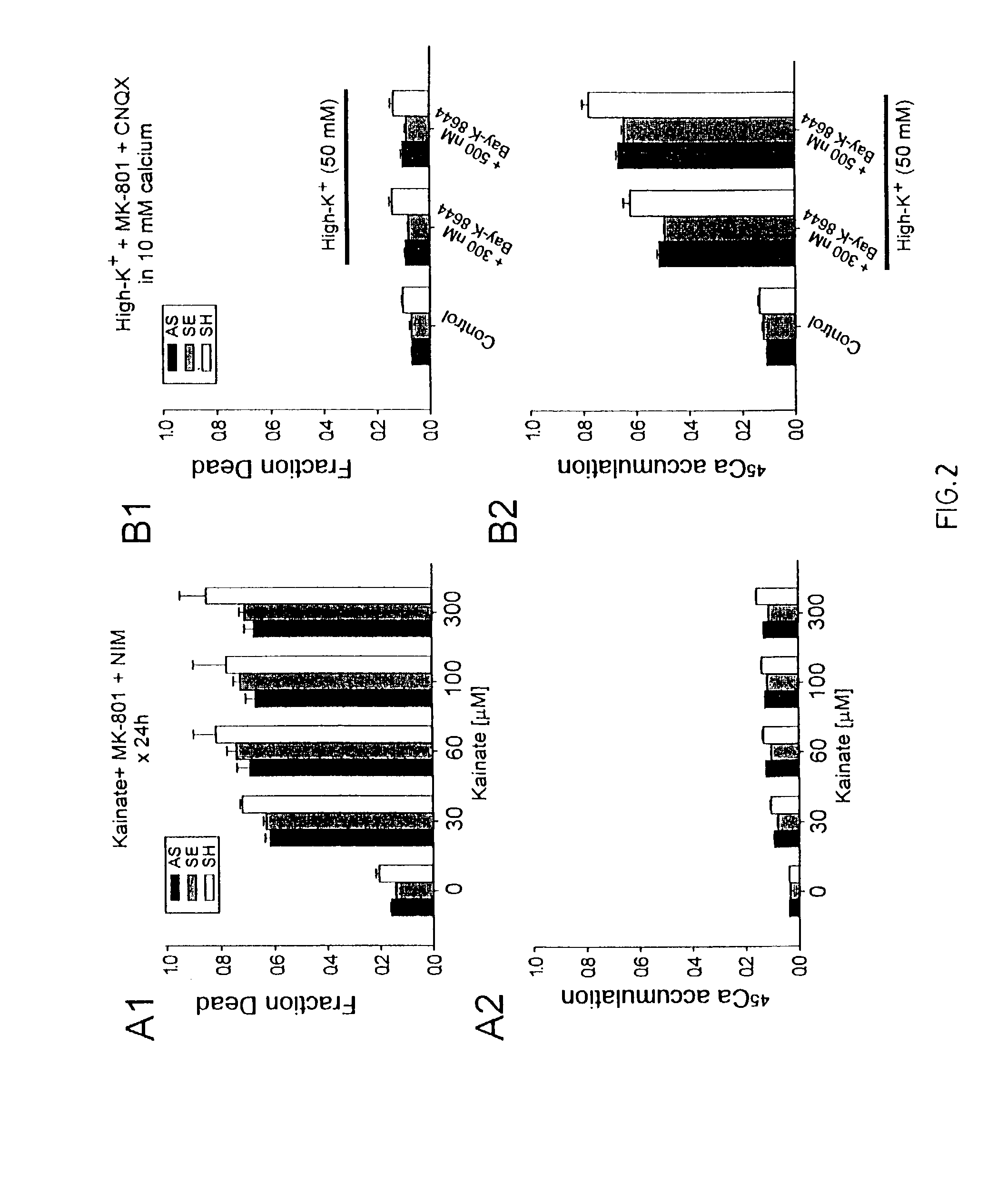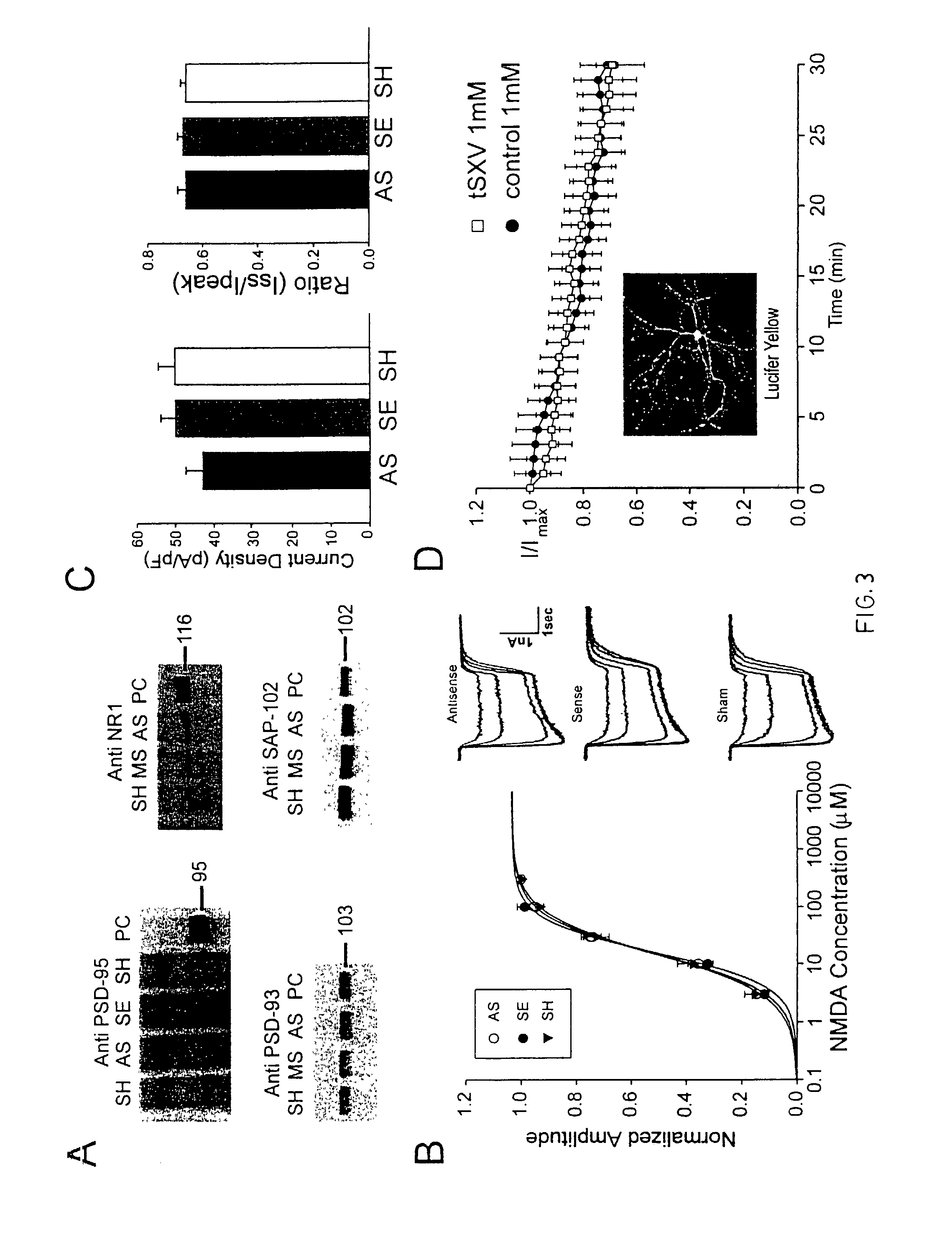Method of reducing injury to mammalian cells
a technology of mammalian cells and nmdar, which is applied in the direction of antinoxious agents, drug compositions, peptide/protein ingredients, etc., can solve the problems of ineffective pharmacological treatments for acute cns injuries, inability to effectively treat acute cns injuries, and inability to achieve the effects of preventing negative consequences, reducing cerebral infarction volume, and reducing the volume of cerebral infarction
- Summary
- Abstract
- Description
- Claims
- Application Information
AI Technical Summary
Benefits of technology
Problems solved by technology
Method used
Image
Examples
Embodiment Construction
Methods:
[0079]Cultured cortical neurons were prepared by standard techniques (4,9) and switched to serum-free media at 24 h [Neurobasal with B27 supplement (Gibco)]. The AS ODN corresponded to nucleotides 435-449 of mouse PSD-95 / SAP90 mRNA (GeneBank Acc. No. D50621). Filter-sterilized phosphodiester AS SE, and MS ODNs (5 μM) were added in culture medium during feedings at 4,6,8 and 10 days after plating. Cultures were used for all experiments (FIGS. 1-4) on day 12. ODN sequences exhibited no similarity to any other known mammalian genes (BLAST search (10)).
[0080]Immunoblotting was done as described in ref. “26”. Tissue was harvested and pooled from 2 cultures / lane. The blotted proteins were probed using a monoclonal anti-PSD-95 mouse IgG1 (Transduction Labs, 1:250 dilution), polyclonal anti PSD-93 (1:1000 dilution) and anti SAP-102 (1:2000 dilution) rabbit serum antibodies (Synaptic Systems GmbH), a monoclonal anti NR1 mouse IgG2a (PharMingen Canada, 1:1000 dilution) or a monoclonal...
PUM
| Property | Measurement | Unit |
|---|---|---|
| voltage | aaaaa | aaaaa |
| pH | aaaaa | aaaaa |
| concentration | aaaaa | aaaaa |
Abstract
Description
Claims
Application Information
 Login to View More
Login to View More - R&D
- Intellectual Property
- Life Sciences
- Materials
- Tech Scout
- Unparalleled Data Quality
- Higher Quality Content
- 60% Fewer Hallucinations
Browse by: Latest US Patents, China's latest patents, Technical Efficacy Thesaurus, Application Domain, Technology Topic, Popular Technical Reports.
© 2025 PatSnap. All rights reserved.Legal|Privacy policy|Modern Slavery Act Transparency Statement|Sitemap|About US| Contact US: help@patsnap.com



